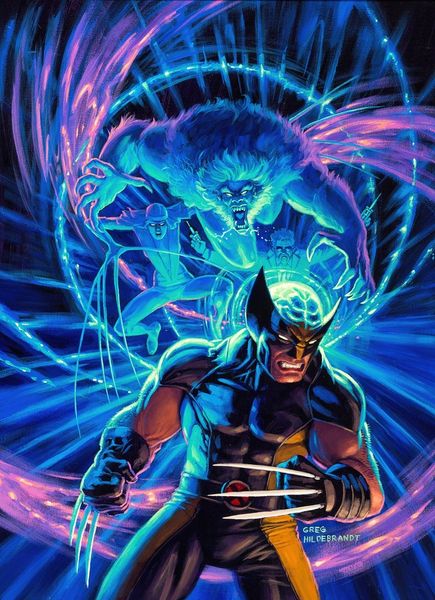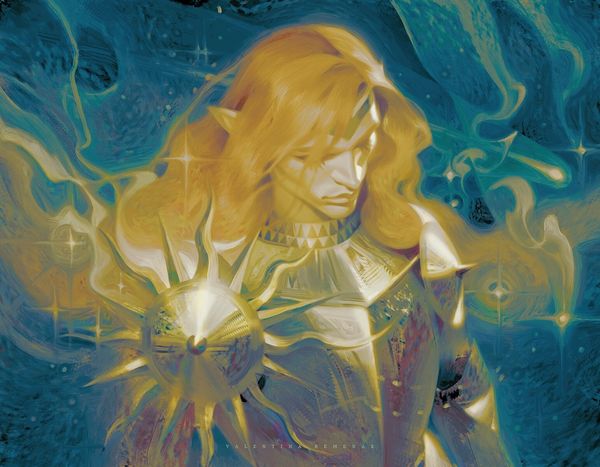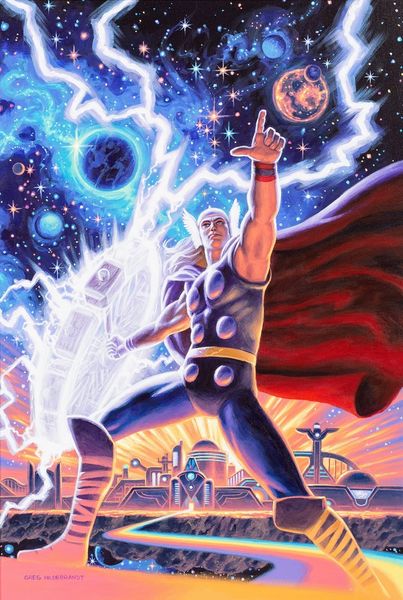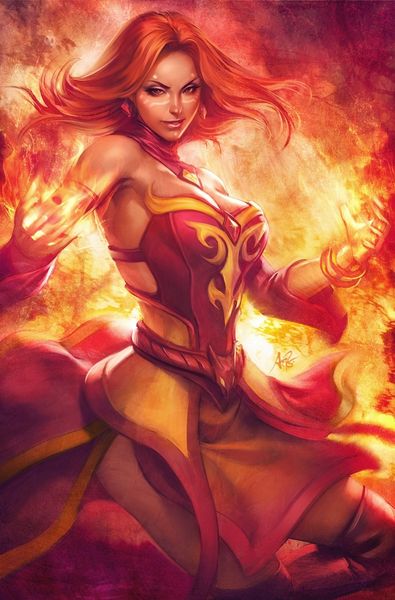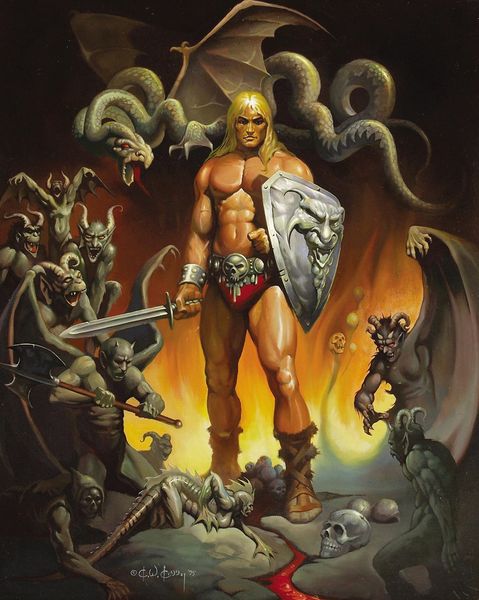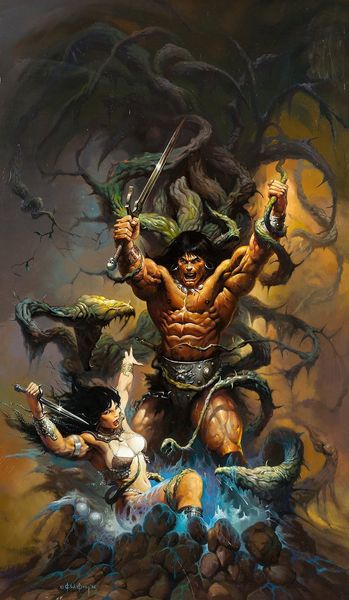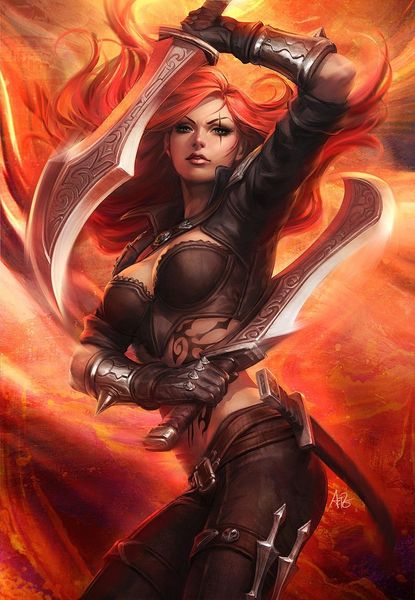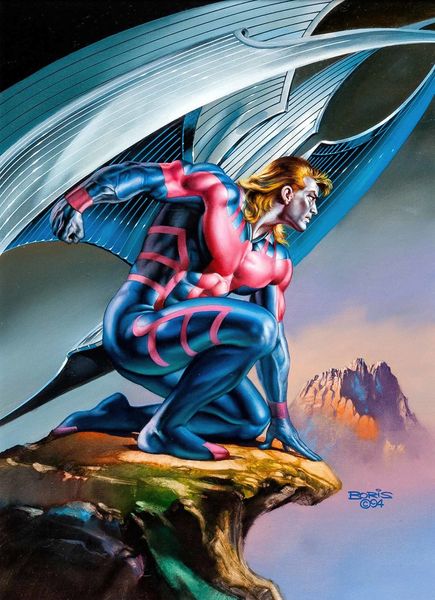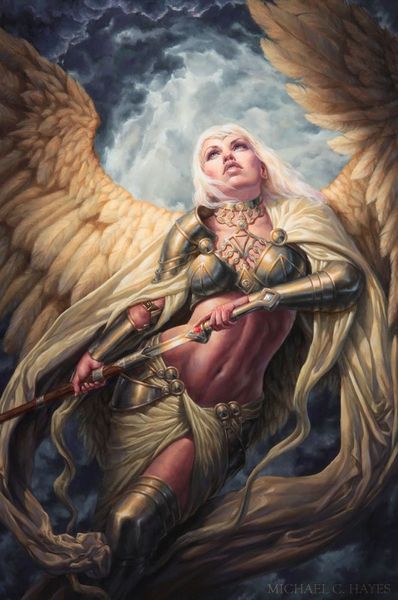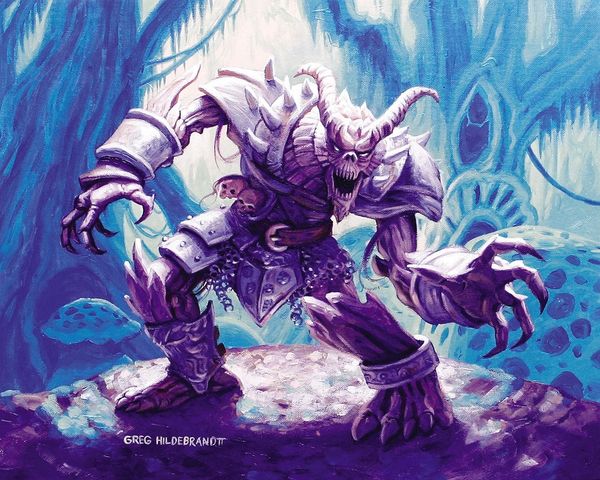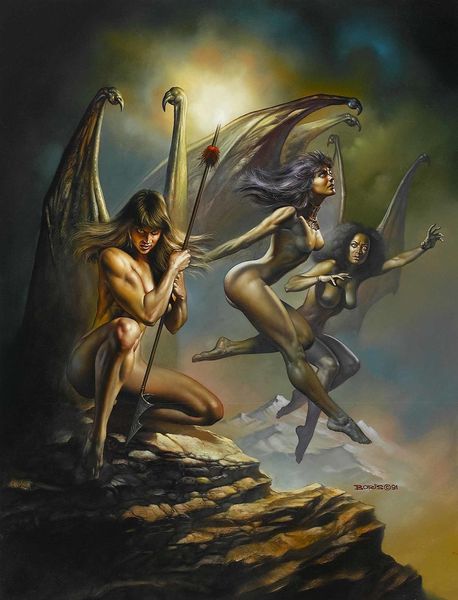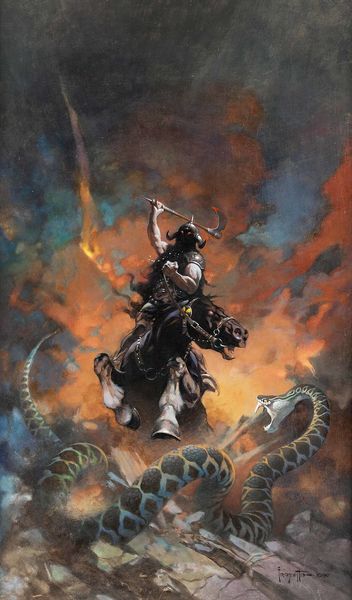
Urza-Mishra War on the World of Magic; The Gathering #2 Pin-Up Ravidel the Battlemage 1996
0:00
0:00
painting, acrylic-paint
#
portrait
#
fantasy art
#
painting
#
fantasy illustration
#
fantasy-art
#
acrylic-paint
#
figuration
#
portrait art
Copyright: Modern Artists: Artvee
Curator: This is Greg Hildebrandt’s “Urza-Mishra War on the World of Magic; The Gathering #2 Pin-Up Ravidel the Battlemage,” painted in acrylics in 1996. Editor: Wow, my first impression is all about the intense visual contrasts. The figure exudes raw power, set against a background that seems split between fire and ice. Curator: Hildebrandt’s work really embodies the socio-cultural obsession with the fantasy genre during that era, moving into heightened narratives in gaming subcultures. Ravidel, as a character, functions as an almost allegorical figure of conflicted power. The war alluded to in the title takes on personal dimensions within the narrative of his character. Editor: Absolutely, you can read the historical context in his very stance; think about the rise of collectible card games in the 90s and the desire to represent diverse kinds of protagonists, especially with the fantasy bend of Magic the Gathering's target audiences. It's not just eye candy but also a mirror reflecting certain gender ideals and aspirations. The composition really sells a character caught in the act of controlling opposing energies. Is this what they meant with 'duality of man'? Curator: The artist consciously positions Ravidel centrally. Note the balance. He’s situated right at that fulcrum where the two energies converge, visually framing him as the fulcrum. Considering that, how do you think audiences engaged with these characters back in 1996, what narratives were implicitly celebrated with fantasy artwork such as this? Editor: You're asking about art's public role, especially given the power dynamics involved. Back then, the fantasy world, while diversifying to represent wider identities, was still heavily filtered through the established modes of representation in comics and the like, male figures of heightened power were meant to stand as ideal characters. This is interesting precisely due to the character standing over those opposed energies. Did he manage to integrate the opposed tensions, or is he about to burst at the seams? Is he there to resolve them? His agency stands right there, at the center of that choice. Curator: So, considering Ravidel as a symbol in a broader visual culture that promoted specific kinds of strength, especially with male subjects… This helps frame a critical viewing. This painting functions as more than a gaming piece; it encapsulates and amplifies socio-cultural anxieties and expectations from the end of the millennium. Editor: Right. It's a slice of 90's pop culture, really, that is about trying to have it all. Thanks to considering the history behind it, this work gains additional layers. Curator: Exactly. Placing art within its time reveals the silent dialogues happening underneath the surface.
Comments
No comments
Be the first to comment and join the conversation on the ultimate creative platform.
